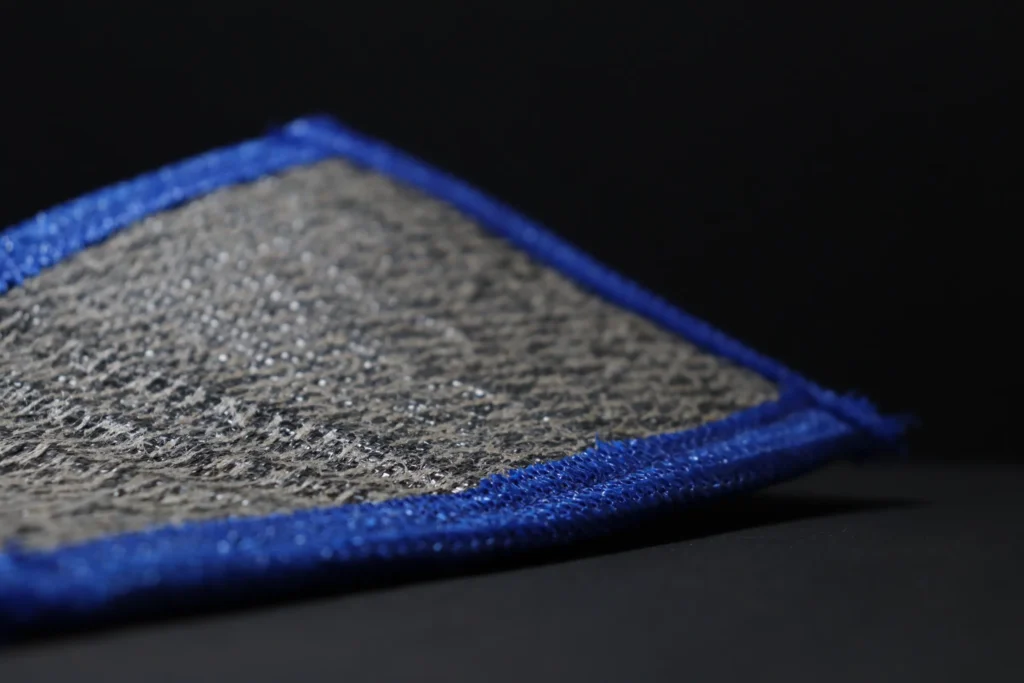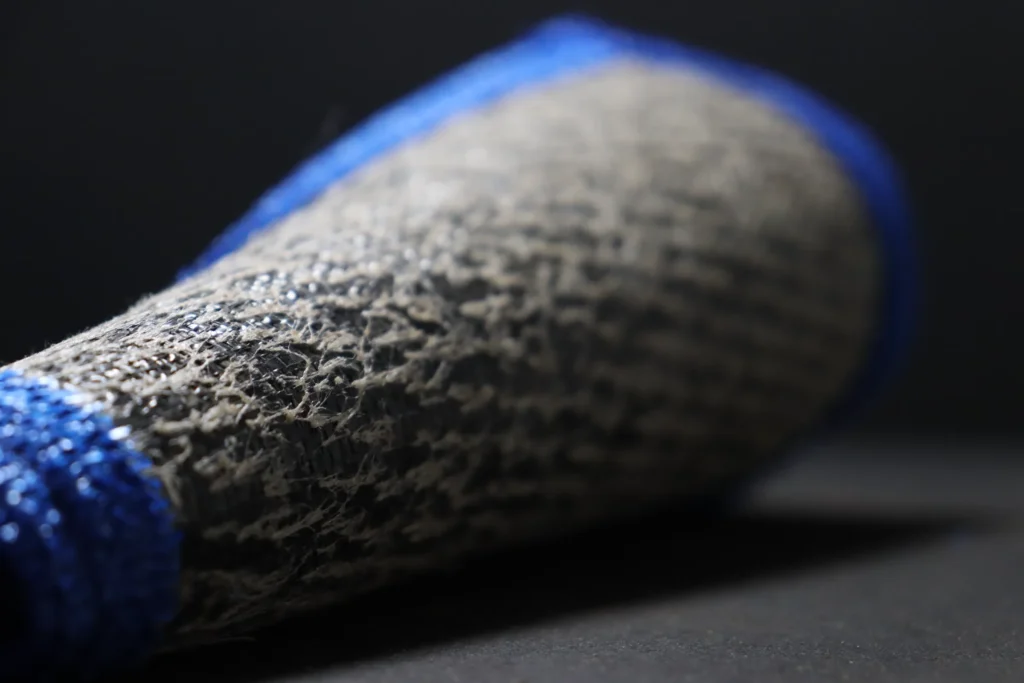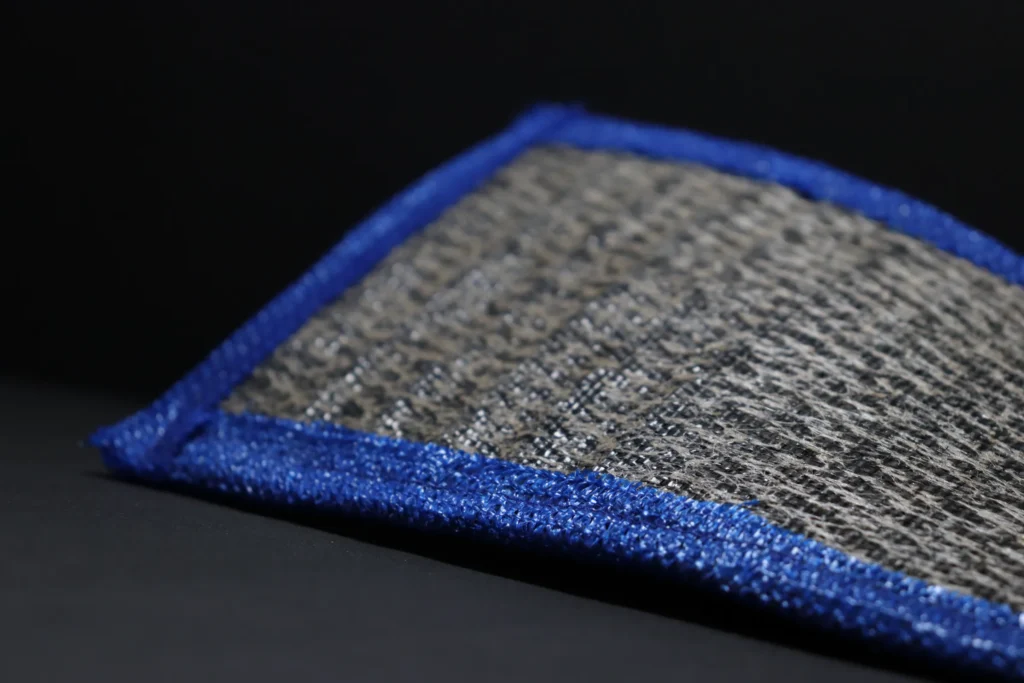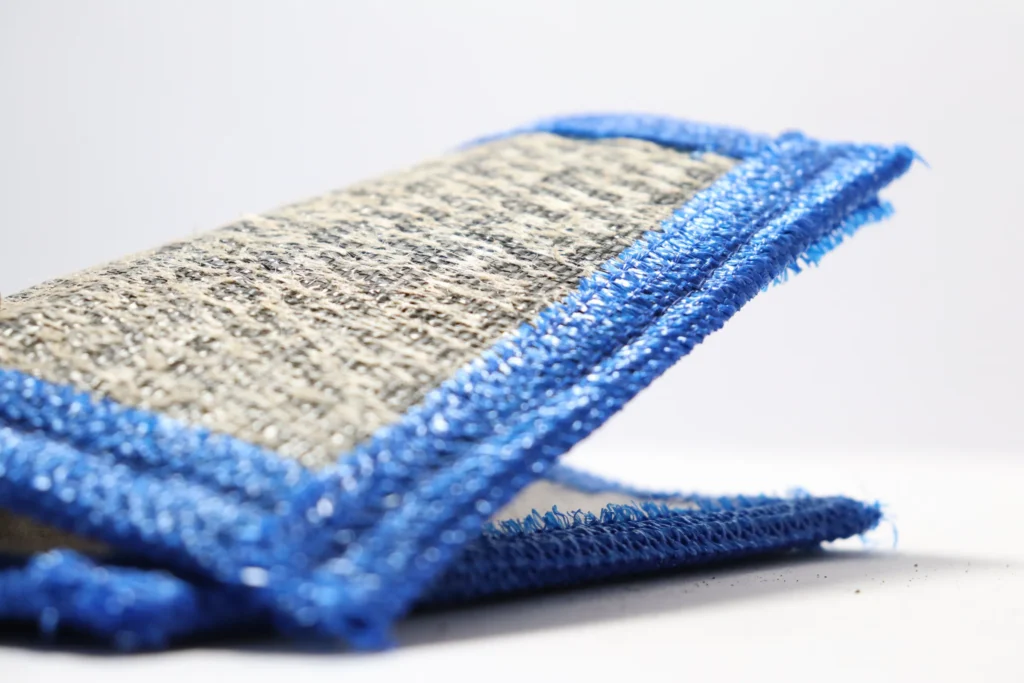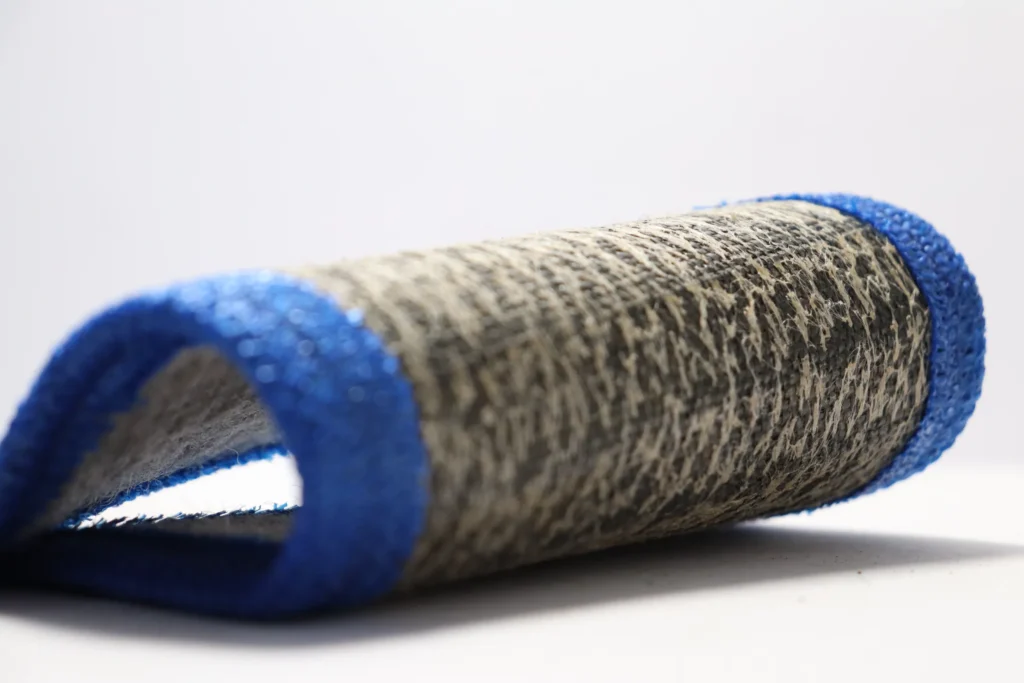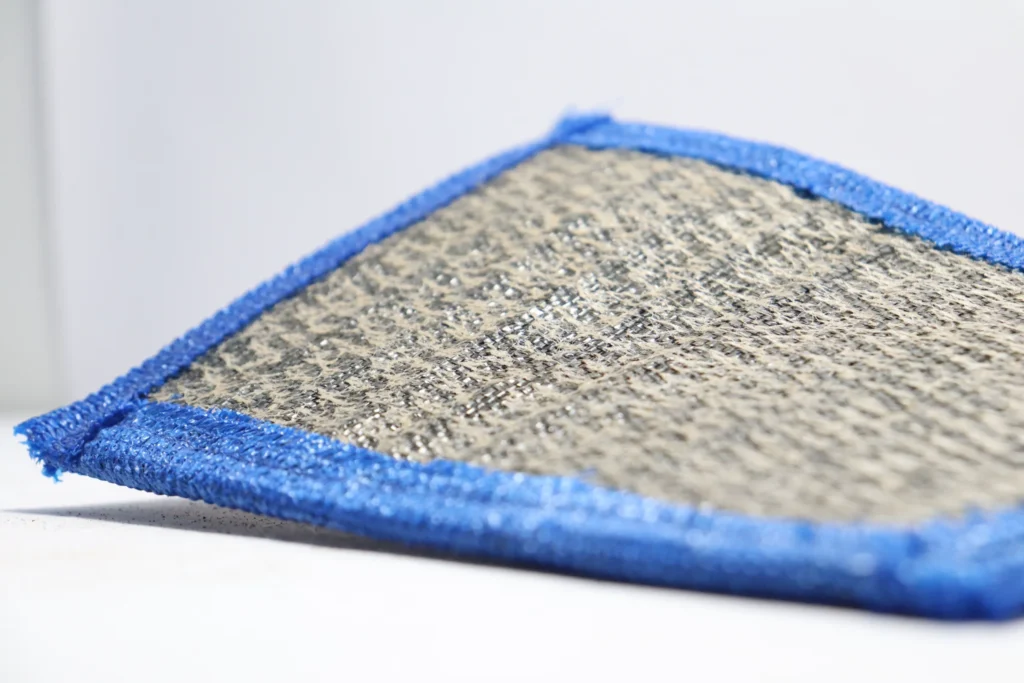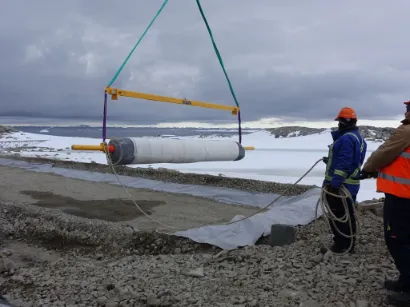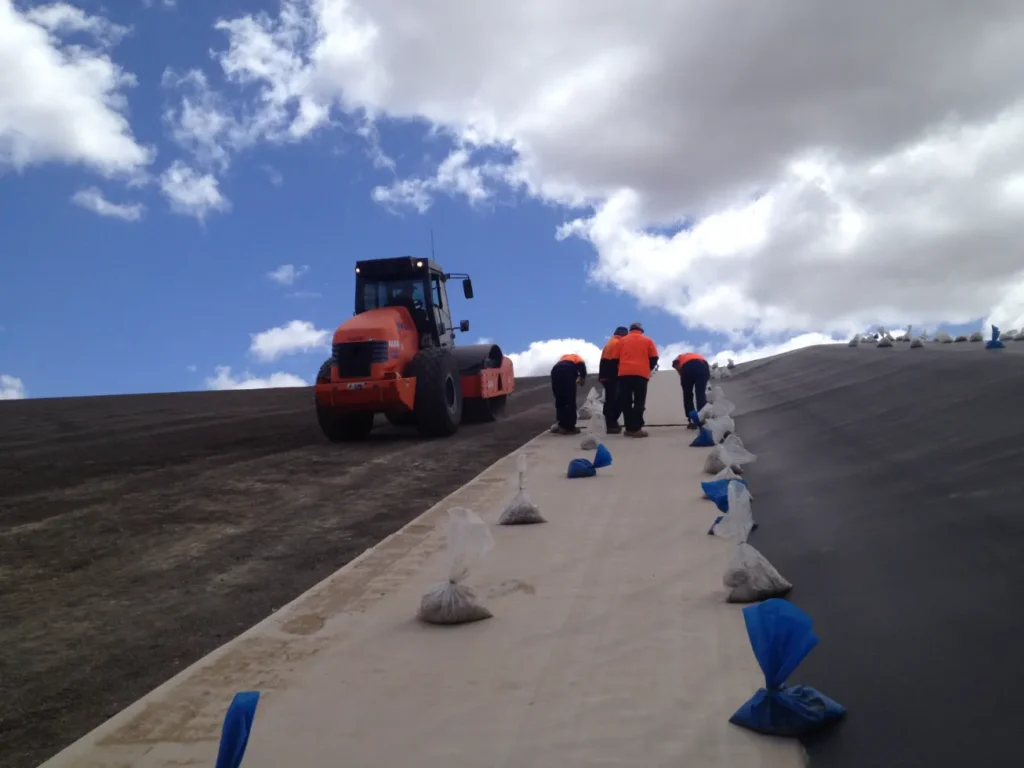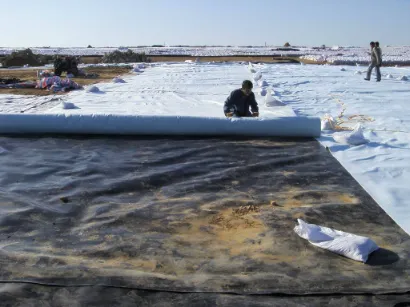Prefabricated Geosynthetics Clay Liners

Geosynthetic Clay Liners & Bentonite Liners
We use the best technology to manufacture Prefabricated Bentonite Clay Liner.
By property, sodium bentonite liner is a natural sealant
Ocean Global has the best technology to manufacture Geosynthetics Clay Liners hydraulic barriers in India. In the geo environmental industry, geosynthetic clay liners are in extensive use as a sealing product. With our expertise in geosynthetics, we provide premium quality prefabricated Geosynthetic Clay Liners with unmatched sealing capability. We ensure rigorous testing and quality assurance and provide GCLs in custom grades and roll lengths.
Table of Contents
Geotextile and bentonite composites (usually sodium bentonite sandwiched between two layers of geotextile) are geotextile and bentonite composites created for a range of environmental containment applications. The geotextiles provide long-term resistance to physical and chemical breakdown in severe environments, while the high swelling capacity and low permeability of the bentonite create an excellent hydraulic seal.
By substituting a thick piece of compacted clay with a thin layer of pure sodium bentonite, GCLs are an ideal alternative to traditional Compacted Clay Liners. Easy installation, improved hydraulic performance, and weather resistance are just a few of the advantages. The majority of GCL projects may be installed by construction employees using standard equipment. GCLs also feature unique self-sealing properties that reduce the possibility of failure in the field or during operation.
What is Plastic Cell Filled Concrete Blocks?
The Geosynthetic Clay Liners or GCLs are an integrated matrix of a layer of bentonite liner encapsulated by woven and nonwoven geotextiles on either side. The three layers together then undergo needle punching and thermal locking for reinforcement and securing the fibers, further improving strength and performance.
A geosynthetic clay liner (GCL) is made up of two geotextiles needle punched together and sandwiched between them is a layer of sodium bentonite clay. The permeability of GCLs is known to be constant and very low. They have the unusual capacity to self-seal at overlaps, seal around penetrations, and self-heal punctures.
Bentonite Clay Liner, a shear strength transferring geosynthetic clay liner, is one of our geosynthetic clay liners. A high-quality sodium bentonite powder is enclosed between an upper and bottom layer of geotextile in this product. Bentonite Clay Liner products are needle punched continuously through all components and then subjected to a regulated heat treatment to successfully “thermally lock” the fibers in place for great long-term shear strength.
What makes our Geosynthetic Clay Liners unique?
Ocean Global GCLs can endure shear loads on steep slopes thanks to needle punched reinforcing. Without relying on extra processing, the increased needle punch density enables larger peak internal shear strengths.
Granular bentonite produces less dust than powdered bentonite during installation and is less likely to shift during the needle punch reinforcement process, resulting in constant hydraulic performance.
Function
From the engineering standpoint, GCLs act as a hydraulic barrier and perform the role of containment. Geosynthetic Clay Liners help with containment of water, leachate, other liquids, and in some cases, gases. They are the most cost-efficient and functional replacement for the more traditional compacted clay liners.
As opposed to traditional compacted clay liners, the geosynthetic clay liners are thin, manufactured in factories undergoing quality checks, and also offer ease of installation on slopes and smaller settlements.
Sector
Waste Water, Mining, and water (environment, dewatering and landfills, and hydraulic works).
Salient Features
- High shear strength
- Low permeability
- Can withstand adverse conditions
- Cost-effective installation when compared to natural clay liners
- By property, sodium bentonite is a natural sealant
- It is a highly effective containment barrier
- Lesser chances of leaks due to installation damage
- Consistent hydraulic performance
- Flexibility
Applications
- Steep slope applications
- Agribusiness
- Coastal and river control works
- Emergency and floods
- Mining
- Oil and gas and energy
- Transportation and infrastructure
- Urban infrastructure
- Landfills
Advantages of a Geosynthetic Clay Liners
(i) Self-healing and self-seaming
Sodium bentonite is a naturally occurring clay with a strong affinity for water. It is self-healing and self-sealing. Sodium bentonite expands up to 15 times its original volume when moistened. This enables self-sealing around penetrations, self-healing punctures, and self-sealing at overlaps.
(ii) Better hydraulic performance
GCLs have a total thickness of less than one inch and outperform many feet of compacted clay in terms of hydraulic performance. The permeability of a completely hydrated GCL is typically 5 x 10-9 cm/sec, which is around 20 times lower than that of a normal compacted clay liner.
(iii) Resistant to varying weather conditions
Freeze-thaw and desiccation-rewetting cycles are less likely to affect GCLs. Compacted clay liners commonly shatter due to freeze-thaw cycles, resulting in increased leakage. As opposed to compacted clay liners, a geosynthetic clay liner delivers consistent performance and is not affected by changes in moisture content, density, or clay content.
(iv) Ease of installation
Because they require substantially less installation work than a compacted clay liner, GCLs are a more environmentally friendly alternative to clay liners. One truckload of GCL replaces 150 truckloads of compacted clay, consuming fewer natural resources. When a GCL is utilized instead of a thicker, more compacted clay liner, it takes up less air space, allowing for more waste space.
Product Features of Geosynthetic Clay Liners
Polyethylene has a long and successful track record of chemical resistance to many of the leachates present in landfills. A variety of applied coating thicknesses ensures extremely low hydraulic conductivities, among other properties. High interface friction values are ensured via a unique optional texturing pattern, which helps the GCL overcome possible instability difficulties on steep slopes.
Additionally, the capacity to reduce landfill cap cover by overcoming desiccation difficulties, offer a good gas barrier layer, and increase the spectrum of sealing applications in a variety of soil types are also advantages.
Interested in knowing more about Geosynthetics Clay Liners? Read our insights on Geosynthetic Clay Liner for Ponds

